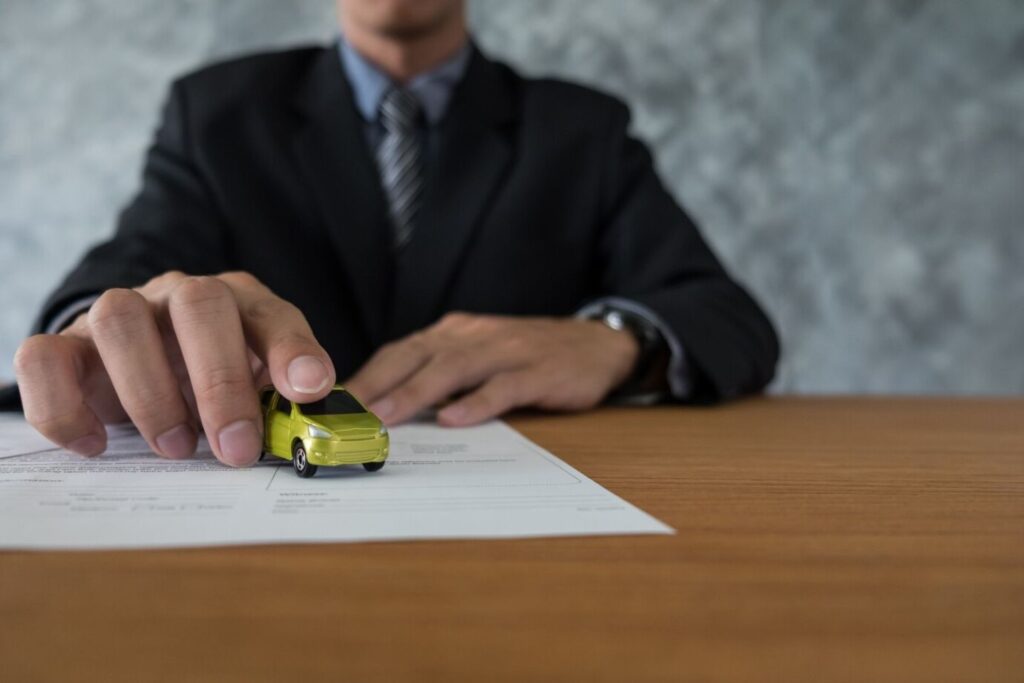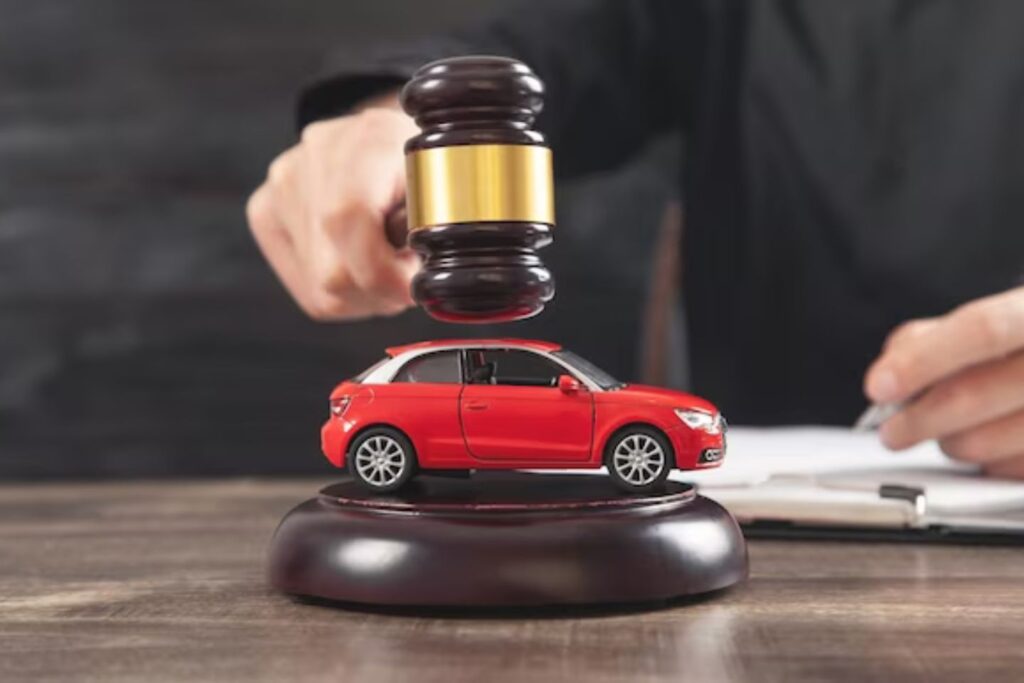In 2021, California led the United States with around 14.3 million registered vehicles, reflecting its status as the most populated state. This high number of automobiles necessitates the implementation of distinct California car laws, regulations, and road rules unique to the state.
Given the dense population, car accidents are unfortunately common in the state. It’s crucial for drivers involved in accidents to be aware of their rights. This knowledge enables them to seek compensation effectively if another driver is at fault.
This guide aims to simplify the understanding of California car laws and prepare you for what follows after a car crash, ensuring you’re well-equipped to defend your rights.


Road Regulations in California
Navigating California’s roads requires understanding its unique rules. This section breaks down essential regulations, ensuring you drive safely and legally within the state, from speed limits to right-of-way laws:
- Making U-Turns: U-turns are permitted in several scenarios if they can be executed safely and there’s no sign specifically prohibiting them. These situations include green lights at intersections, openings on divided highways, across double yellow lines, and in residential areas with traffic signs or lights.
- Using Cell Phone While Driving: In California, using a cell phone while driving is banned unless it’s through a hands-free device. For drivers under 18, cell phone use is completely forbidden, except for emergencies, and this rule holds even when stopped at traffic lights or signs.
| School Zone | 25 mph |
| Railroad crossings with less than 400 ft. visibility | 15 mph |
| Vehicles towing trailers | 55 mph |
| Business and residential areas | 25 mph |
| Two-lane undivided highways | 55 mph |
| Highways, freeways, and interstates | 65 to 70 mph |
- Penalty for Driving Under the Influence of Alcohol: Driving under the influence of alcohol is a serious offense in California, with strict penalties enforced for those exceeding the 0.08% blood alcohol limit or showing impairment at lower levels.
- Safety Precautions: Everyone in a vehicle must wear a seatbelt, and children must be in appropriate seats or restraint devices. Motorcycle riders are also required to wear helmets, emphasizing safety for all road users.
- Leaving Children In Car: Leaving children under six years old unattended in a car is illegal unless supervised by someone 12 years or older. Additionally, it’s against the law to leave your car running when you’re not in it.
- Speed Regulations: California sets general speed limits that apply unless otherwise indicated by road signs, ensuring drivers know the maximum speeds to maintain safety and legality on the roads.
Car Accident Laws in California


In 2019, the California Highway Patrol (CHP) reported over 251,000 injuries and fatalities from vehicle collisions, expressing the critical need for strict car laws in California.
These regulations aim to protect drivers, passengers, and pedestrians alike:
Minimum Insurance Requirements
In California, drivers must carry minimum liability insurance coverage to ensure they can cover damages if they’re at fault in an accident.
This includes:
- $15,000 for bodily injury per person
- $30,000 for bodily injury per accident
- $5,000 for property damage.
Liability insurance helps pay for the injuries of others in accidents caused by the policyholder, but it does not cover the policyholder’s own injuries or property damage. Given the potential high costs of accidents, many drivers opt for coverage beyond the minimum requirements. Additional coverage can assist with legal fees and compensate crash victims more fully.
California Car Accident Statute of Limitations
California enforces a statute of limitations for filing lawsuits related to car accident injuries. Under the California Code of Civil Procedure section 335.1, individuals have two years from the date of the accident to file a lawsuit based on negligence, the common ground for fault in injury cases.
This deadline highlights the importance of timely action following a car accident to ensure legal rights are preserved.
If you find yourself in the uncertain aftermath of a car accident, The Personal Injury Center stands ready to assist you. We facilitate connections with seasoned legal experts in your vicinity, enabling you to seek the compensation you rightfully deserve.
Fault Rules in California
California operate under a fault-based system for car accidents, meaning that drivers responsible for causing an accident are also liable for any resulting damages. These damages can range from property damage and medical bills to lost income and other accident-related expenses.
There are several types of fault that California recognizes in the context of car accidents:
- Negligence: When a driver fails to exercise the care expected of a reasonable person.
- Recklessness: This involves a conscious disregard for the safety of others.
- Intentional Misconduct: When a driver purposefully commits an act that leads to an accident, such as running a red light on purpose.
- Strict Liability: This applies in cases where fault is assigned regardless of the driver’s carelessness or intent. Hitting a pedestrian in a crosswalk is an example where the driver is automatically at fault.
California’s Parental Responsibility Laws
In California, parents, and legal guardians may be held financially liable for any injuries or property damage caused by their minor children during a car accident if they have given express or implied consent for the minor to drive a vehicle. This responsibility applies regardless of whether the minor holds a valid driver’s license.
What to do Following a Car Accident in California
After a car accident in California, it’s important to follow the law’s clear instructions for reporting the incident. You must report any accident that results in injury, death, or property damage. Here’s how to navigate the aftermath while protecting your rights:
Act Quickly
You have 10 days to report the accident to the California DMV by filing the SR-1 form. Missing this deadline could result in your license being suspended. Also, you’re required to notify local law enforcement within 24 hours if the accident involves injury or death.
Document Injuries Immediately
If possible, take photos of your injuries right away, using your phone or camera. Should you need medical care, ask the healthcare provider to document your injuries with photos. Additionally, jot down or record your observations about any pain or damage as soon as you can.
Exchange Essential Information
Make sure to exchange license, insurance, and registration information with the other driver. Taking photos of these documents is ideal, but if that’s not possible, write down the details. Also, gather contact information from any witnesses.
Get Medical and Legal Help
Seeking medical help immediately after the accident is crucial for your health and for supporting your legal case. Documenting your injuries early on serves as concrete evidence for any claims you might make.
The Personal Injury Center can connect you with top legal experts to help navigate your case. Getting the right support is key to ensuring you’re treated fairly and justly during these tough times.
Latest California Car Laws for Safety
California has introduced several key laws aimed at improving road safety. Here’s a rundown of the latest regulations every driver and pedestrian should know:
Repealing Anti-Cruising Ordinances: AB 436
- What It Means: This law repeals 1982 ordinances that banned lowriding and cruising, protecting the rights of lowrider owners.
- The Impact: Lowrider enthusiasts can now enjoy cruising on public streets without the threat of anti-cruising laws.
Cracking Down on Catalytic Converter Theft: AB 641
- What It Means: It’s now illegal for anyone other than licensed dismantlers to possess nine or more used catalytic converters.
- The Penalty: Fines range from $250 to $1,000 per offense, highlighting the crackdown on illegal dismantling.
Implementing Speed Cameras in Key Zones: AB 645
- What It Means: Speed cameras will be installed in critical areas, including school zones, streets prone to illegal racing, and high-injury networks.
- The Penalty: First-time offenders get a warning. Repeat or severe offenses can lead to fines up to $500, emphasizing the importance of following speed limits.
Enhancing Pedestrian Safety Near Crosswalks: AB 413
- What It Means: Parking is prohibited within 20 feet of crosswalks to improve visibility and reduce pedestrian accidents.
- The Exception: Commercial vehicles can park in designated loading zones, ensuring a balance between safety and practicality.
Why You Should Seek Legal Assistance for a Car Accident


Seeking legal assistance after a car accident in California, especially one that wasn’t your fault, is crucial for protecting your rights and securing fair compensation for any injuries or damages.
- Legal Guidance and Support
A car accident lawyer brings legal expertise to your case. They guide you through the complex legal process, evaluate your claim’s strength, and recommend the best steps to take. Their knowledge helps prevent costly errors, ensuring you’re compensated fairly for your injuries and damages.
- Expert in Settlement Negotiations
Lawyers can accurately assess your claim’s value, account for all damages, and negotiate with insurance companies to maximize your compensation. Lawyers also handle all communications with insurers, safeguarding you from missteps that could undermine your case.
- Hidden Injuries
Even if injuries seem minor or nonexistent immediately after an accident, they can emerge or worsen later. A lawyer ensures you get the necessary medical evaluations and treatments, covering current and future medical costs, as well as compensation for any long-term effects or lost wages.
- Overcoming Claim Denials
If your initial claim was denied, a lawyer could make all the difference. Insurers might deny claims for various reasons, such as disputed liability or valuation disagreements. A skilled lawyer will reassess your case, gather more evidence, and construct a compelling case.
- Disputing Fault Accusations
Insurance companies sometimes wrongfully accuse drivers of causing accidents. A lawyer is essential in such situations to prove your innocence. They review all evidence and witness accounts to establish the accident’s true cause and your lack of fault. If necessary, they can employ experts in accident reconstruction to strengthen your case and ensure you receive rightful compensation.
Should you be facing the aftermath of a car accident and feel unsure about how to proceed, The Personal Injury Center is here to offer guidance. We’ll help you find experienced attorneys in your area, supporting your journey to secure the compensation you are entitled to.
Key Takeaways
|



